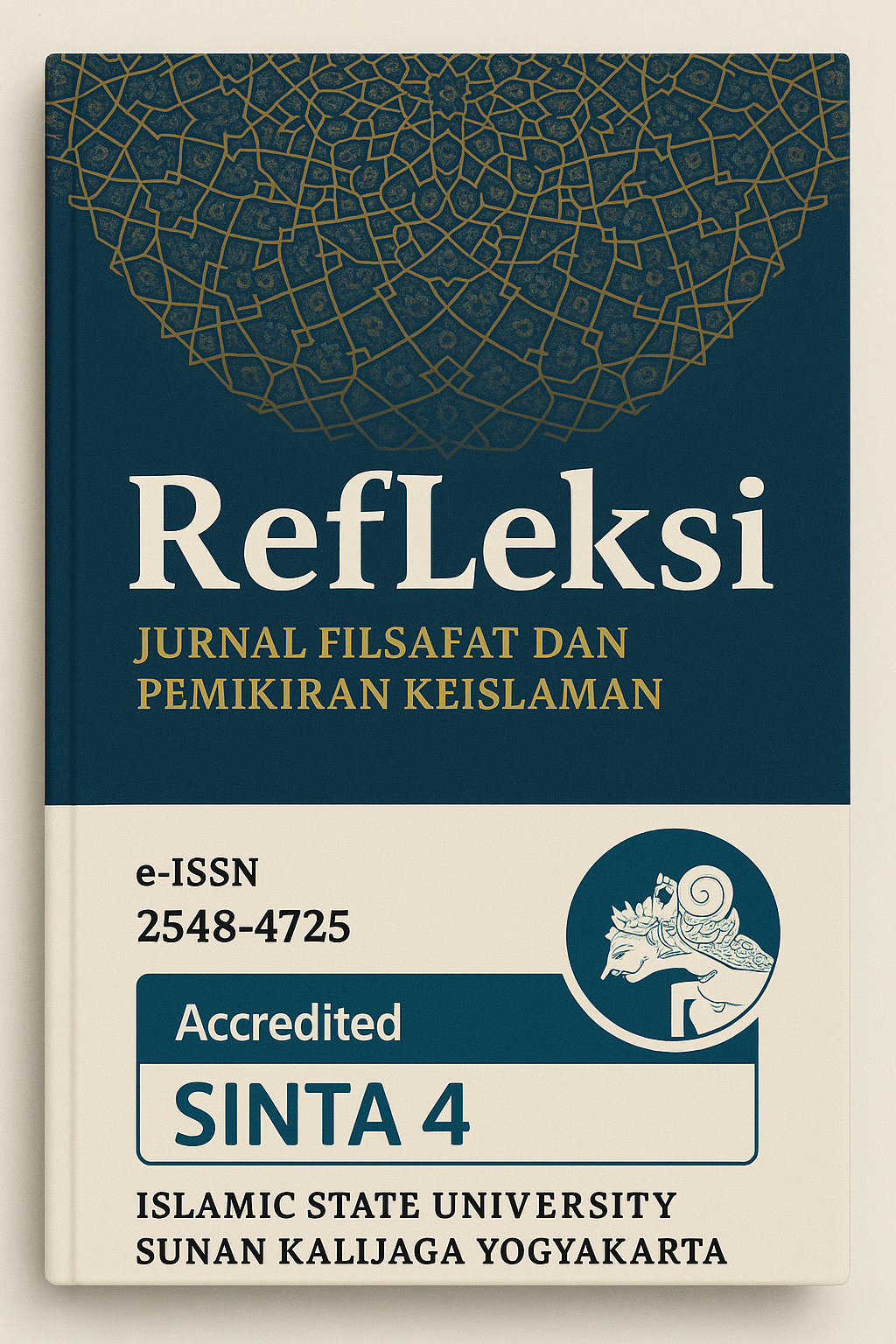Relasi Virtual Guru Dan Murid Di Ruang Digital: Studi Atas Laman Website Tarekat Syadziliyah dan Naqsyabandi Haqqani
DOI:
https://doi.org/10.14421/ref.v25i2.5769Keywords:
Sufi Order, Naqshbandi Haqqani, Shadziliyah, Online Bayat, Digital SufismAbstract
Sufis believe that closeness to God cannot be learned alone through intellectual contemplation, but must be experienced through the guidance of a teacher (murshid). The relationship between a murshid and a salik, which they call a suhbah, is described as a friendly relationship that needs to be established in a friendly atmosphere. So with the spirit of such relationships, it is not surprising that Sufism is now being looked at as a solution to the problems of the contemporary social world. Two large Sufism orders, Naqshbandi Haqqani and Shadziliyah, are examples of orders that have successfully gained popularity. His courage in adapting elements of modernity is also one reason why he is increasingly accepted. This congregation not only allows music and dancing in various traditional celebrations, but also builds virtual spaces and provides online bay'at (initiation) services. This phenomenon then raises at least two questions that want to be addressed in this research: 1) how can digital space bridge tarekat practices, and 2) to what extent can the relationship between murshid and murid be established through digital space? This research is entirely qualitative, based on observations of two websites, sufilive.com (for the Naqsyabandi Haqqani congregation) and suficommunities.org (for the Shadziliyah congregation), as well as reading various literature. Apart from that, this research also wants to use Pierre Bourdieu's genetic structuralism approach as an analytical tool. Therefore, this research wants to evaluate the possibility of several vital changes that occur when a relationship that was initially built on the nuances of intimacy with God is mediated by technology. Although it can be considered that this relationship has found a more modern and rational space for manifestation, the transformation of this virtual relationship (suhbah) is important to be explored in depth.
 Abstract viewed: 297 times
|
Abstract viewed: 297 times
|
 PDF downloaded = 272 times
PDF downloaded = 272 times
References
Al-Sulami, Abu Abdirrahman. Tasawuf: Buat Yang Pengen Tahu. Translated by Faisal Saleh. Jakarta: Penerbit Erlangga, 2007.
Al-Taftazali, Abu al-Wafa al-Ghanimi. Sufi Dari Zaman Ke Zaman: Suatu Pengantar Tentang Tasawuf. Translated by Ahmad Rofi Utsmani. Bandung: Pustaka, 1985.
Attar, Fariduddin. Tadzkiratul Auliya’: Kisah-Kisah Ajaib Dan Sarat Hikmah Para Wali Allah. Translated by Kasyif Ghoiby. Yogyakarta: Penerbit Titah Surga, 2015.
Barker, Chris. The Sage Dictionary of Cultural Studies. London: Sage Publications, 2004.
Bourdieu, Pierre, and Loïc J. D. Wacquant, eds. An Invitation to Reflexive Sociology. Chicago: University of Chicago Press, 1992.
Ghony, M. Djunaidi, and Fauzan Almanshur. Metode Penelitian Kualitatif. Yogyakarta: Ar-Ruzz Media, 2012.
Heffernan, Troy. Bourdieu and Higher Education: Life in the Modern University. Singapore: Springer Nature, 2022.
Hidayat, Ziaulhaq. “Transforming Sufism Into Digital Media: Eshaykh and Simplification of Tarekat Orthodoxy.” Episteme: Jurnal Pengembangan Ilmu Keislaman 17, no. 2 (2022).
Jones, Pip, Liz Bradbury, and Shaun Le Boutillier. Pengantar Teori-Teori Sosial. Translated by Achmad Fedyani Saifuddin. Jakarta: Yayasan Pustaka Obor Indonesia, 2016.
Kadir, Aynur, Kate Hennessy, Ozge Yalcin, and Steve DiPaola. “Embodied Interactions with a Sufi Dhikr Ritual: Negotiating Privacy and Transmission of Intangible Cultural Heritage in ‘Virtual Sama,’” 2017. https://doi.org/10.14236/ewic/EVA2017.73.
Krämer, Gudrun, and Sabine Schmidtke, eds. Speaking For Islam: Religious Authorities in Muslim Societies. Leiden: Brill, 2006.
Malik, Jamal, and John Hinnels, eds. Sufi-Sufi Diaspora: Fenomena Sufisme Di Negara-Negara Barat. Translated by Gunawan. Bandung: Mizan, 2015.
Martono, Nanang. Kekerasan Simbolik Di Sekolah. Jakarta: Rajawali Press, 2012.
Milani, Milad, and Adam Possamai. “The Nimatullahiya and Naqshbandiya Sufi Orders on the Internet: The Cyber-Construction of Tradition and the McDonaldisation of Spirituality.” Journal for the Academic Study of Religion 26, no. 1 (2013): 51–75. https://doi.org/10.1558/arsr.v26i1.51.
Mudin, Moh. Isom. “Suhbah: Relasi Mursyid dan Murid dalam Pendidikan Spiritual Tarekat.” Tsaqafah 11, no. 2 (2015): 399.
Piraino, Francesco. “Between Real and Virtual Communities: Sufism in Western Societies and The Naqshbandi Haqqani Case.” Social Compass 63, no. 1 (2016): 93–108. https://doi.org/10.1177/0037768615606619.
Raudvere, Catharina, and Leif Stenberg, eds. Sufism Today: Heritage and Tradition in the Global Community. London: I. B. Tauris, 2009.
Ridgeon, Lloyd. Sufis and Salafis in the Contemporary Age. London: Bloomsbury, 2015.
Ritzer, George, and Douglas J. Goodman. Teori Sosiologi: Dari Teori Sosiologi Klasik Sampai Perkembangan Mutakhir Teori Sosial Postmodern. Translated by Nurhadi. Yogyakarta: Kreasi Wacana, 2010.
Saeed, Abdullah. Pemikiran Islam: Sebuah Pengantar. Translated by Sahiron Syamsuddin and M. Nur Prabowo S. Yogyakarta: Baitul Hikmah Press, 2014.
Schimmel, Annemarie. Dimensi Mistik Dalam Islam. Translated by Sapardi Djoko Damono. Jakarta: Pustaka Firdaus, 2000.
Sugiyono. Metode Penelitian Kuantitatif, Kualitatif, Dan R&D. Bandung: Alfabeta, 2013.
Talgat, Temirbayev, and Temirbayeva Aigerim. “Digital Landscape of Contemporary Sufi Groups in Kazakhstan.” Al-Farabi 82, no. 2 (n.d.).
Taufik, Zulfan, and Muhammad Taufik. “Mediated Tarīqat Qādiriyyat Wa Naqshabandiyyat in the Digital Era: An Ethnographic Overview.” Esensia: Jurnal Ilmu-Ilmu Ushuluddin 22, no. 1 (2021).
Trimingham, J. Spencer. Madzhab Sufi. Translated by Luqman Hakim. Bandung: Pustaka, 1999.
Westerlund, David, ed. Sufism in Europe and North America. London: Routledge, 2004.
Downloads
Published
Issue
Section
License
Copyright (c) 2025 Abdulloh Hanif

This work is licensed under a Creative Commons Attribution-NonCommercial-ShareAlike 4.0 International License.






